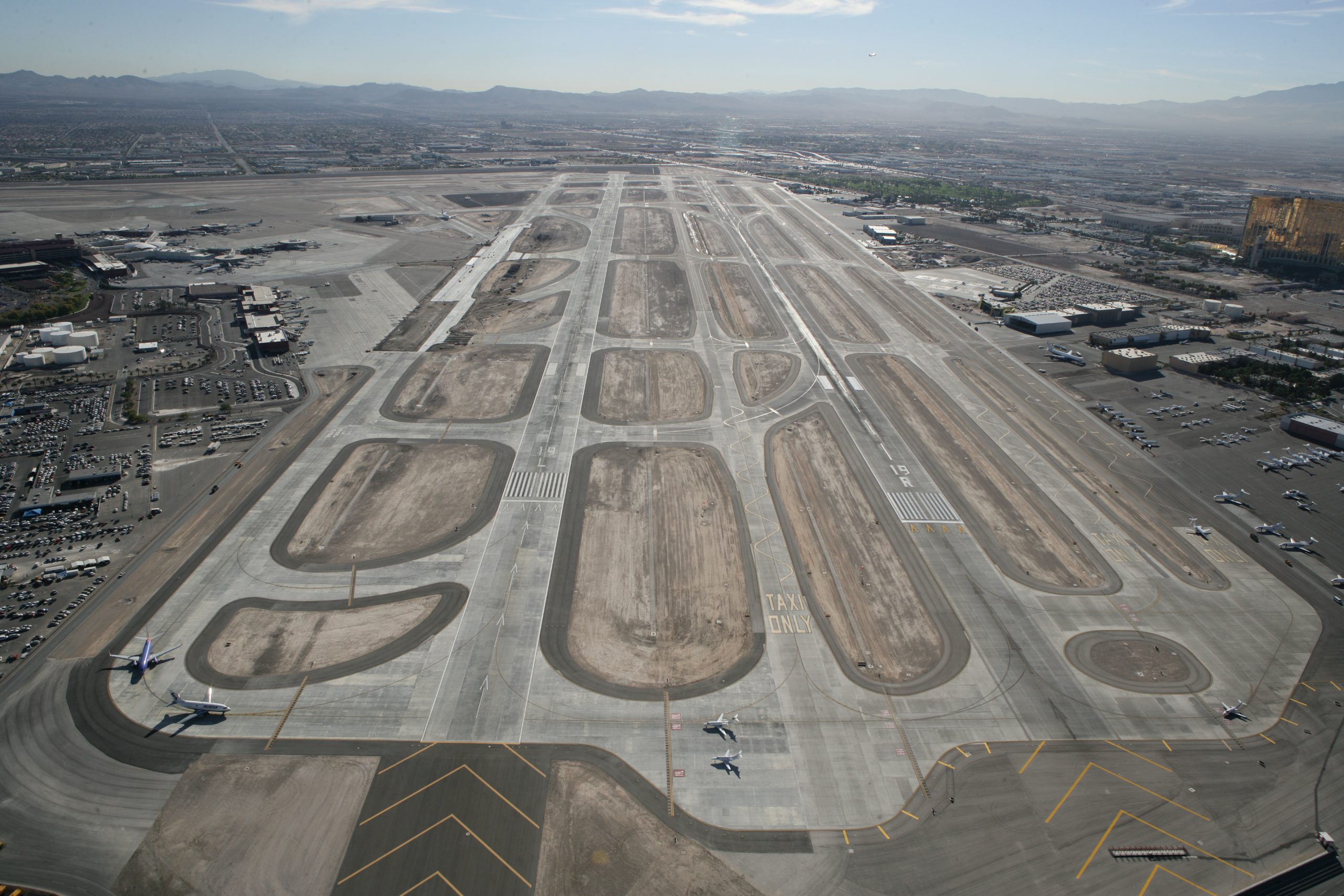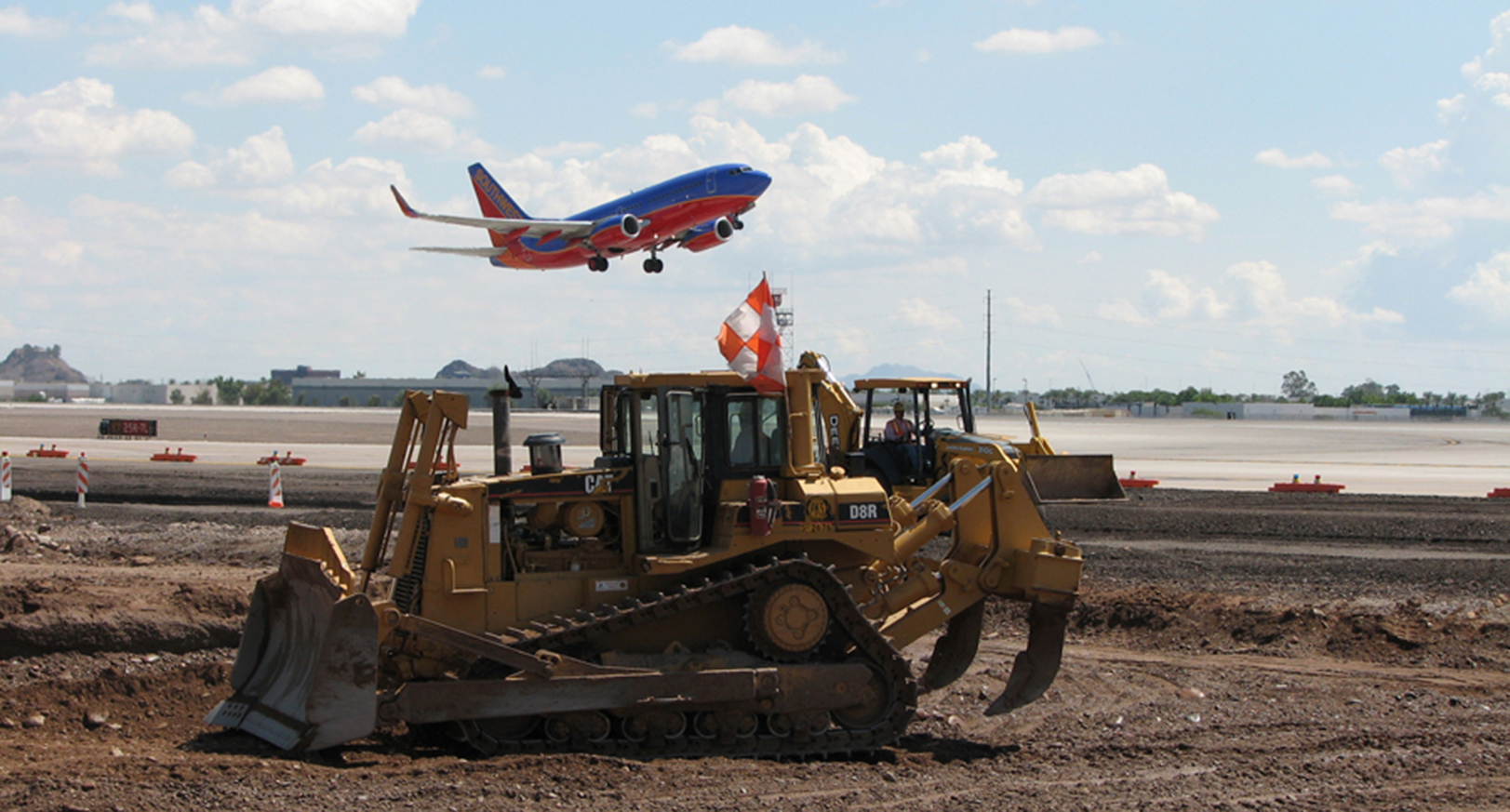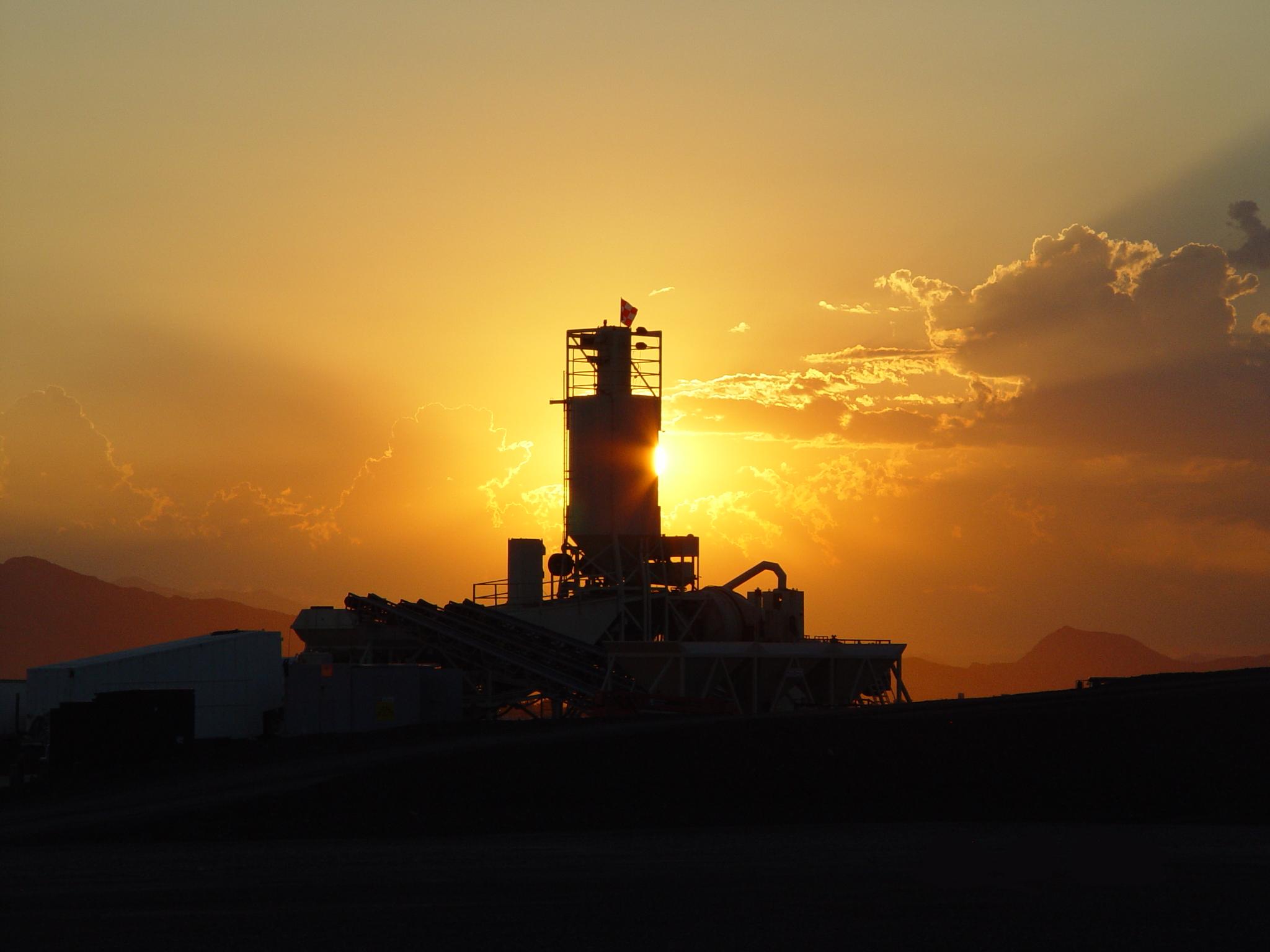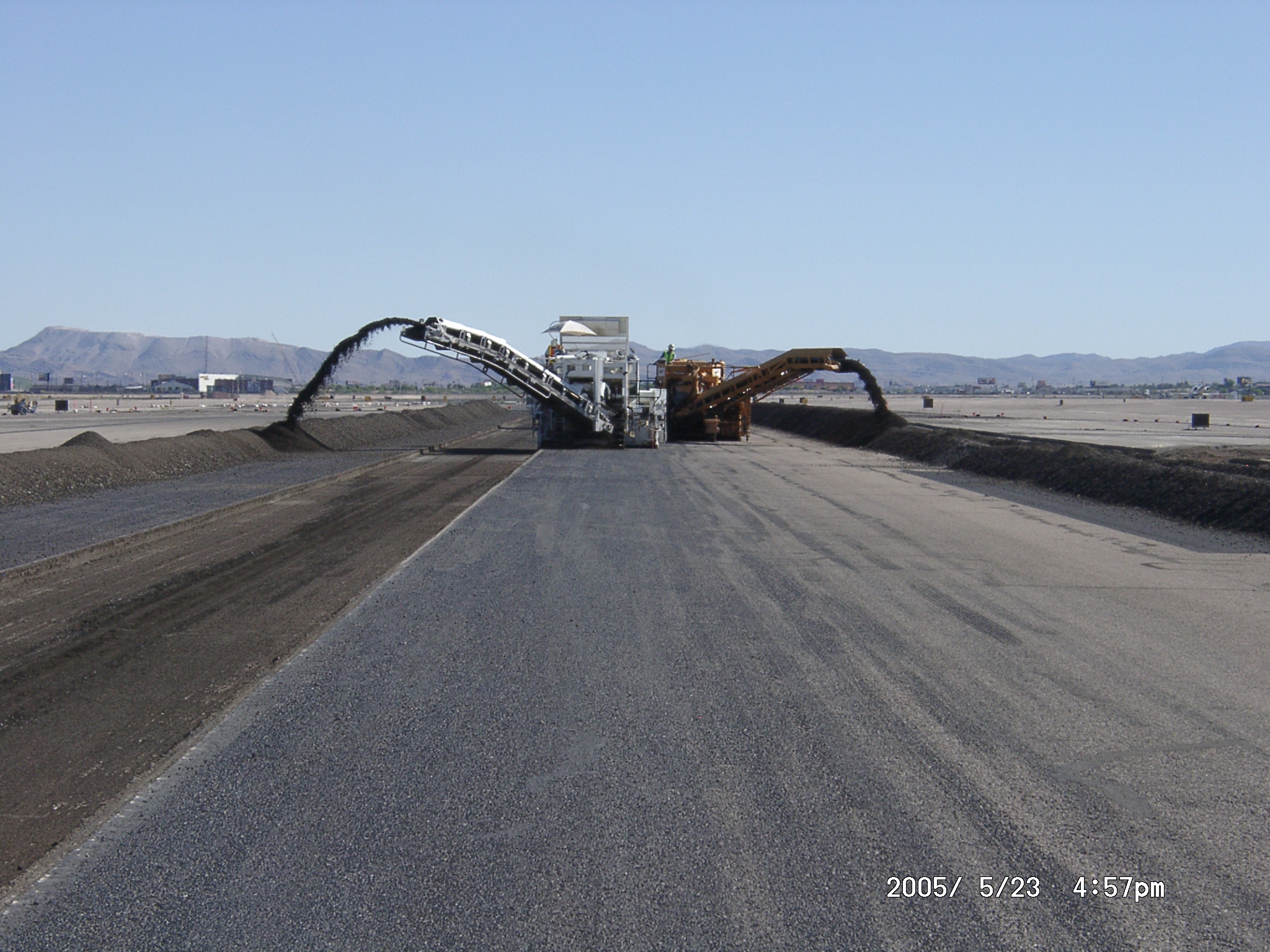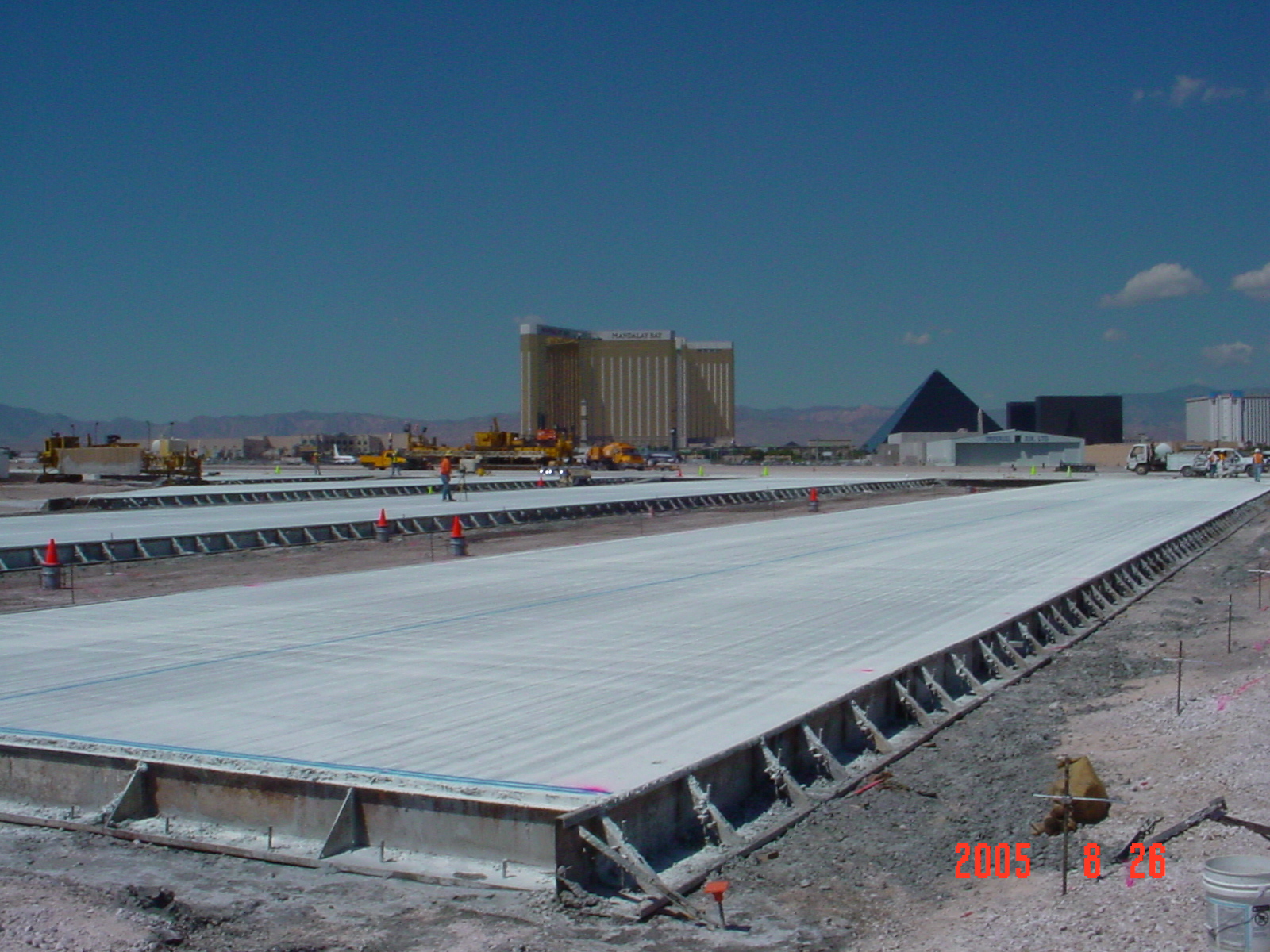McCarran International Airport Runway 1R-19L and Taxiway D Reconstruction
Las Vegas, Nevada
Clark County and Nevada Department of Aviation awarded Kiewit this project, to reconstruct 530,000 square yards of runway and taxiway paving for Runway 1R-19L, Taxiway D and associated cross taxiways at McCarran International Airport. The scope of work involved demolishing existing asphalt runways and taxiways, and then replacing with Portland cement concrete pavement with asphalt shoulders. The $63 million job was divided into four phases, which were staggered throughout the airfield. Because slip-form paving was not an option, Kiewit set 18- and 22-inch forms for every pave. The placement of the forms dictated the sequence of paving passes. In addition, the paving operation had to overcome extreme temperatures, precipitation and wind that occasionally forced Kiewit to postpone pours, reschedule pours and change shifts throughout the job. The typical paving width was 37.5 feet for runways and 33.3 feet for taxiways while both averaged a length of 720 lineal feet. In addition, we replaced the airfield lighting and conduit banks. Kiewit’s organization was structured on major items of work, and in the early stages of the project, we established an escalation ladder and reporting procedure with Clark County Aviation to ensure timely and effective communication. We held weekly meetings to review schedule and communicate upcoming operations that may affect either landside or airside operations. Overall, the communication on this project was very effective. Because of Kiewit’s successful schedule management and phasing, and the coordination between Kiewit’s team, CCDOA, and the FAA, there were minimal disruptions to aircraft movement. In addition, Kiewit completed the project 69 days ahead of schedule with an excellent safety record.
